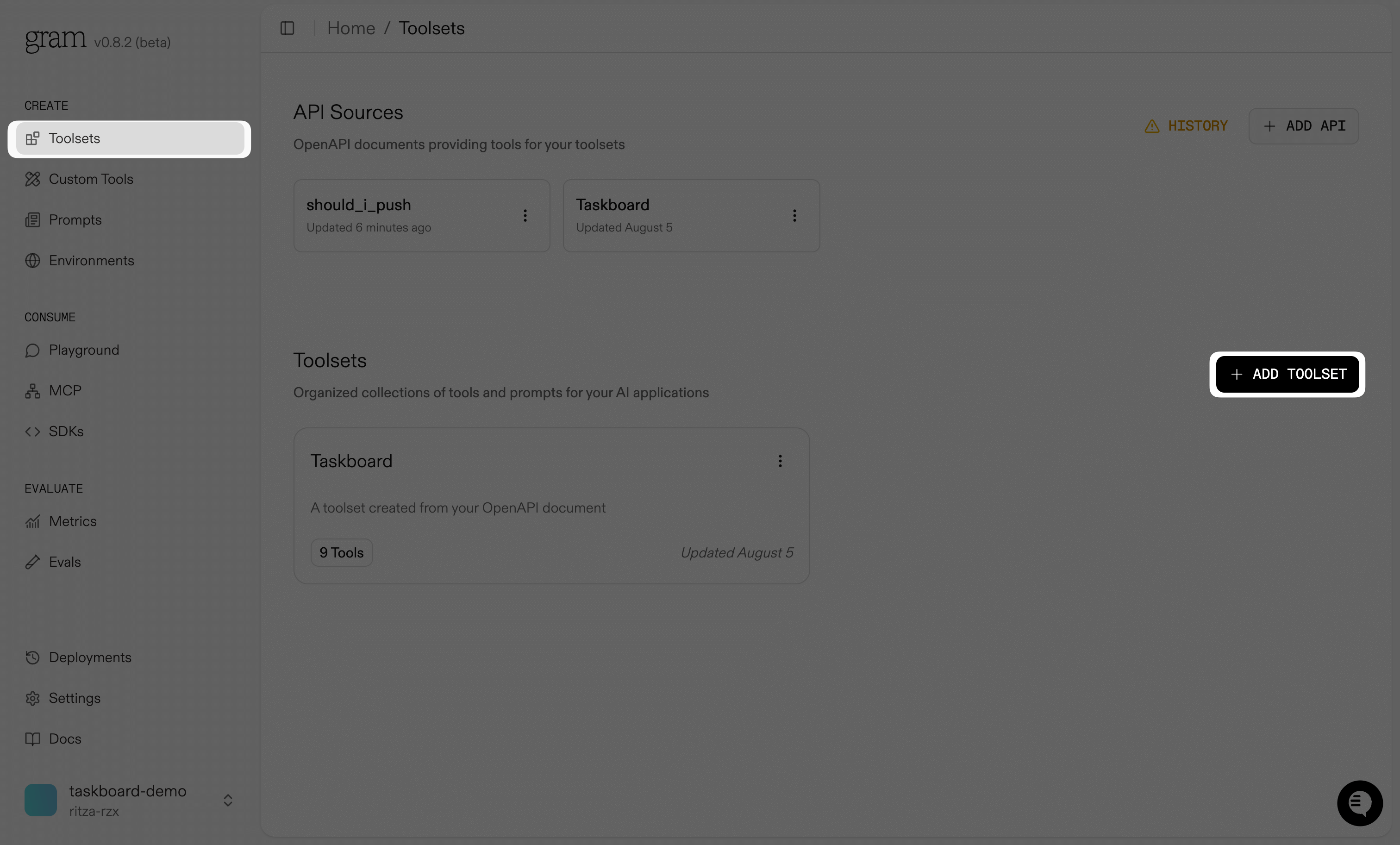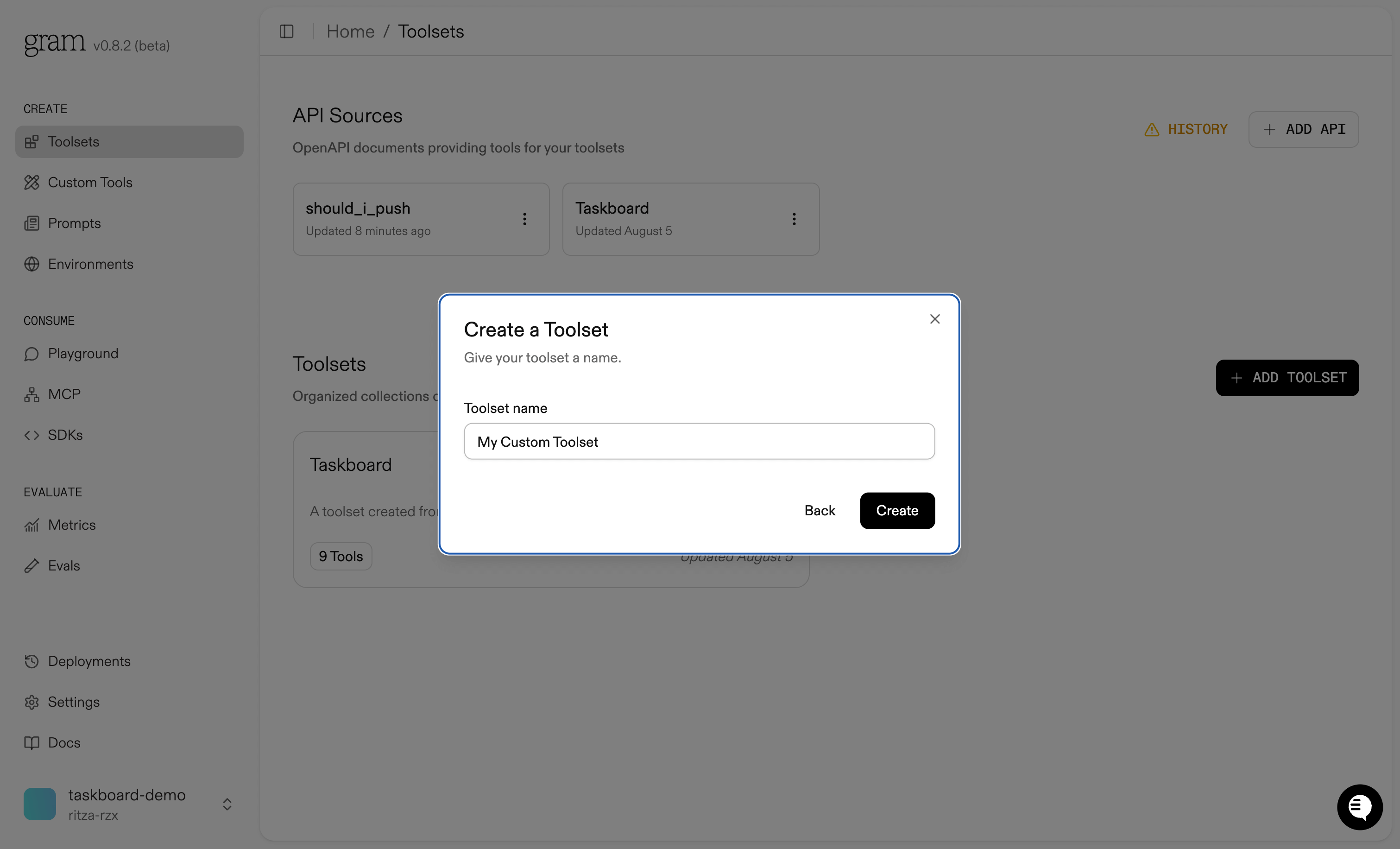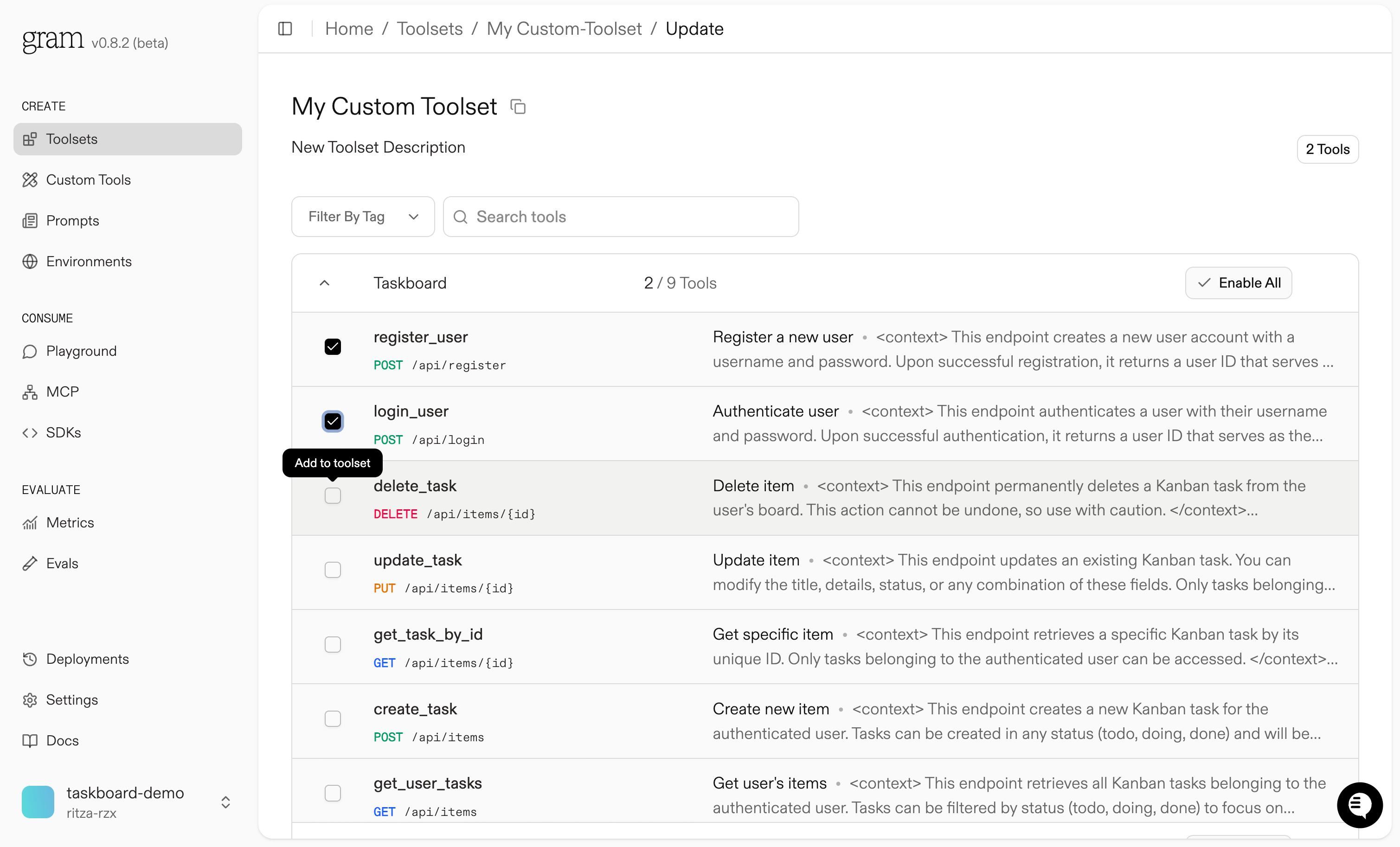Curate a custom toolset
Gram allows you to organize your tools into fit-for-purpose toolsets for improved performance with LLMs.
Tool curation is an important aspect of building a production-ready MCP server. LLMs work best when they have a clear understanding of the tools relevant to the intended use case. By curating a toolset, you can ensure that the LLMs avoid context overload and tool confusion.
We’ve included best practices for curating toolsets below.
To create a toolset:
- In the Gram dashboard, click Toolsets in the sidebar (under Create).
- Click + New Toolset.

- Give the toolset a descriptive name.

- When you click Create, you’ll be redirected to the toolset configuration page with a list of all available tools. You can select the tools you want to include in the toolset or use the Enable All button to include all available tools in the set.

Best practices for curating toolsets
Section titled “Best practices for curating toolsets”-
Design workflow-first - Group tools by agent tasks, not API structure. Create “Deal Creation” or “Deal Management” toolsets rather than mixing all CRUD operations together.
-
Include dependency tools - Map tool dependencies and include prerequisite tools. If
create_dealneeds user IDs, includesearch_usersin the same toolset. -
Support progressive disclosure - Include discovery tools (
search_users), validation tools (get_deal_by_id), and action tools (create_deal) that work together naturally. -
Create persona-specific toolsets - Design different toolsets for different roles: sales reps need deal progression tools, managers need reporting tools, support needs customer issue tools.
-
Avoid the “everything” toolset - Don’t include every available tool in one set. This overwhelms agents and defeats the purpose of curation.
-
Test with real scenarios - Use the Gram playground to validate your toolset with end-to-end workflows and watch how agents navigate your tools.
-
Maintain consistent naming - Stick to patterns like
search_*rather than mixingsearch_usersandfind_companieswithin the same toolset.